How to use that meter Santa brought you
Learn how to use a multimeter BEFORE you really need to
Dear Mike
I asked Santa for a new multimeter this Christmas and he gifted me a new Klein ET270. It will suit me just fine. (Thanks Santa). As I was playing with it on Christmas morning my son said he would like to know more about how to operate a multimeter. I told him that I knew a source and I would forward some of your articles to him but when I went back into the archives I could not find a single (or series) article(s) on basic multimeter operation to share with him. There are several articles describing how to use the tool in specific operations but nothing in a general sense. Since you are always looking for subject material that the masses could put to use I thought I might mention it to you. Thanks for sharing your knowledge. Leroy S.
Dear Leroy,
That’s a great idea. To get your son (and everyone else) more familiar with multimeters in general, here’s the basics how to measure the AC voltage on a shore power pedestal.
FYI: I’ve asked Klein to send me a their new ET270 for review, and as soon as I get one to try I’ll do an in-depth article and video on it. It looks like a great multimeter for RV owners and homeowners.
Be careful who you ask for advice!
First of all, it’s not a good idea to take electrical advice from a guy in a big box store. Some of them will know the correct answer, but many of them will not understand RV electrical power. So let’s look at the basics.
You may have seen my diamond voltage chart in the dozens of articles I’ve written over the last 12 years. USA residential and campground power is typically split-phase 120/240 volts.
Note that if you measure between the two hot legs of the 50-amp outlet, you should see a nominal 240 volts. If you measure from neutral to either hot leg you should measure a nominal 120 volts. All good so far?
A 30-Amp RV uses 120 Volts… NOT 240 Volts!
For a 30-amp RV outlet, you should measure around 120 volts from the hot leg to neutral. You should never measure 240 volts. If it does that would indicate that your electrician thought this was a clothes dryer outlet and made a huge wiring mistake.
Plugging your 30-Amp RV into a TT-30 outlet that’s been miswired with 240 Volts would burn up lots of your RV electrical systems and appliances in seconds! ALWAYS meter a newly installed TT-30 outlet to confirm it’s 120 Volts.
Manual-Range Meter Settings
Now, if you were to set a manual meter to the 200-volt AC range and measure 120 volts, then all is well. That’s because you’ve told the meter that you don’t expect anything more than 200 volts, so it faithfully indicates 120 volts.
Note that you do have to set it to the AC scale (usually a squiggly line) and make sure your meter probes are plugged in the common (black) and V/Ohm (red) inputs.If you accidentally set your meter to DC volts or plug the probes in the wrong jacks, your meter might read 0 volts when there’s real AC voltage present.
Danger, Will Robinson!
But what happens if you have your manual-range meter set on the 200-volt scale and encounter 240 volts either on a properly wired 50-amp outlet or a dangerously miswired 30-amp outlet? Well, the meter won’t be harmed, but the display will normally indicate an OL, for Over-Limit.
If you’re used to reading a meter you’ll probably know that you exceeded the voltage range. But if you’re not used to meter reading, you may not realize that your electrician accidentally wired up your 30-amp outlet with 2-pole 240 volts, instead of 1-pole 120 volts. Either way, it can be confusing.
Set it to 600 Volts AC….
So that’s why I recommend you always set a multi-meter to the next highest scale above 240 volts, with 400-volt and 600-volt ranges being common. And always set your meter to the proper range before you touch the meter probes to any circuit.
Make sure you don’t have the Hold button pushed, which will lock the meter to display 0 or 120 or 240 volts, even after you removed the probes from the circuit.
What about auto-ranging meters?
More on that topic later once Klein sends me an ET270 review sample. It’s a bit different than using a manual range meter, but the voltage measurement principles are the same.
Watch the video!
Here’s a 4-minute video to on using a manual-range digital meter to measure AC voltage. Buy a digital meter now (before you have an electrical problem) and practice using it in a stress-free environment. You can buy a 3-meter kit from Southwire on Amazon by clicking HERE.
Please let me know in the comments below if you would like more Video Shorts on electrical troubleshooting…
OK, everyone. Remember that electricity is a useful and powerful force, so we all need to pay attention to safety precautions while using it.
Let’s play safe out there….Mike

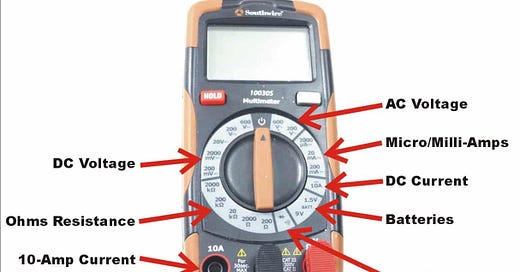



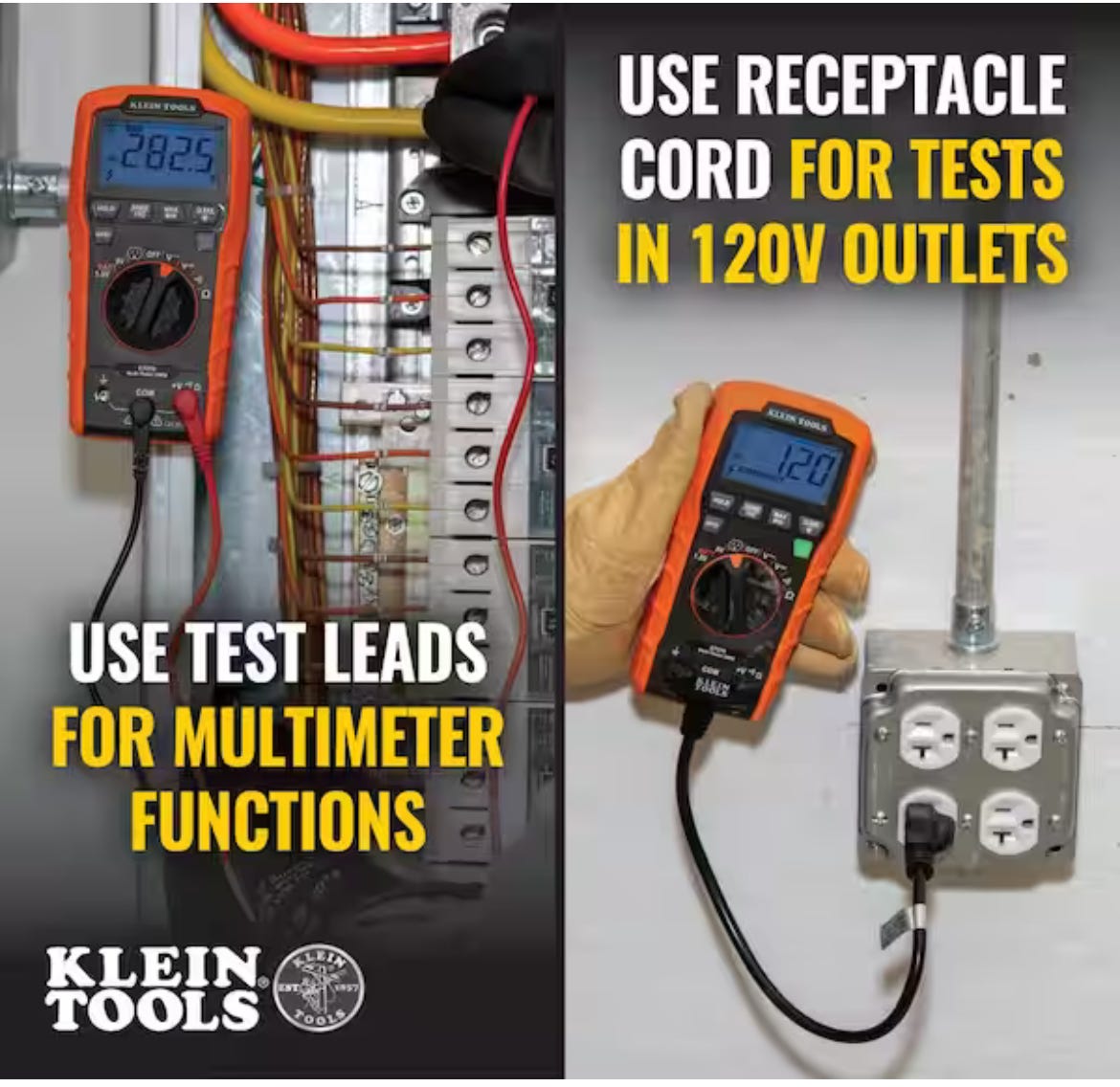
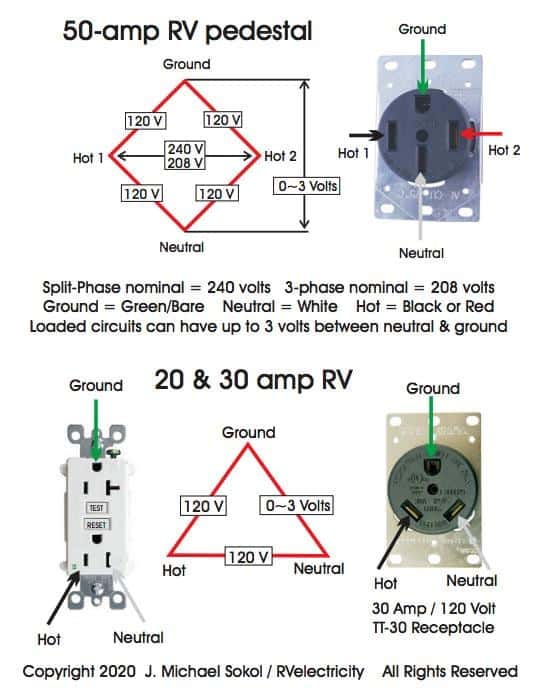
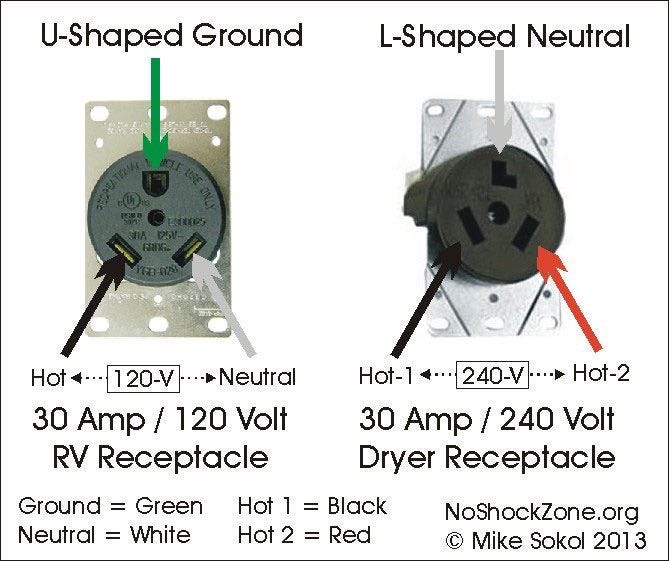

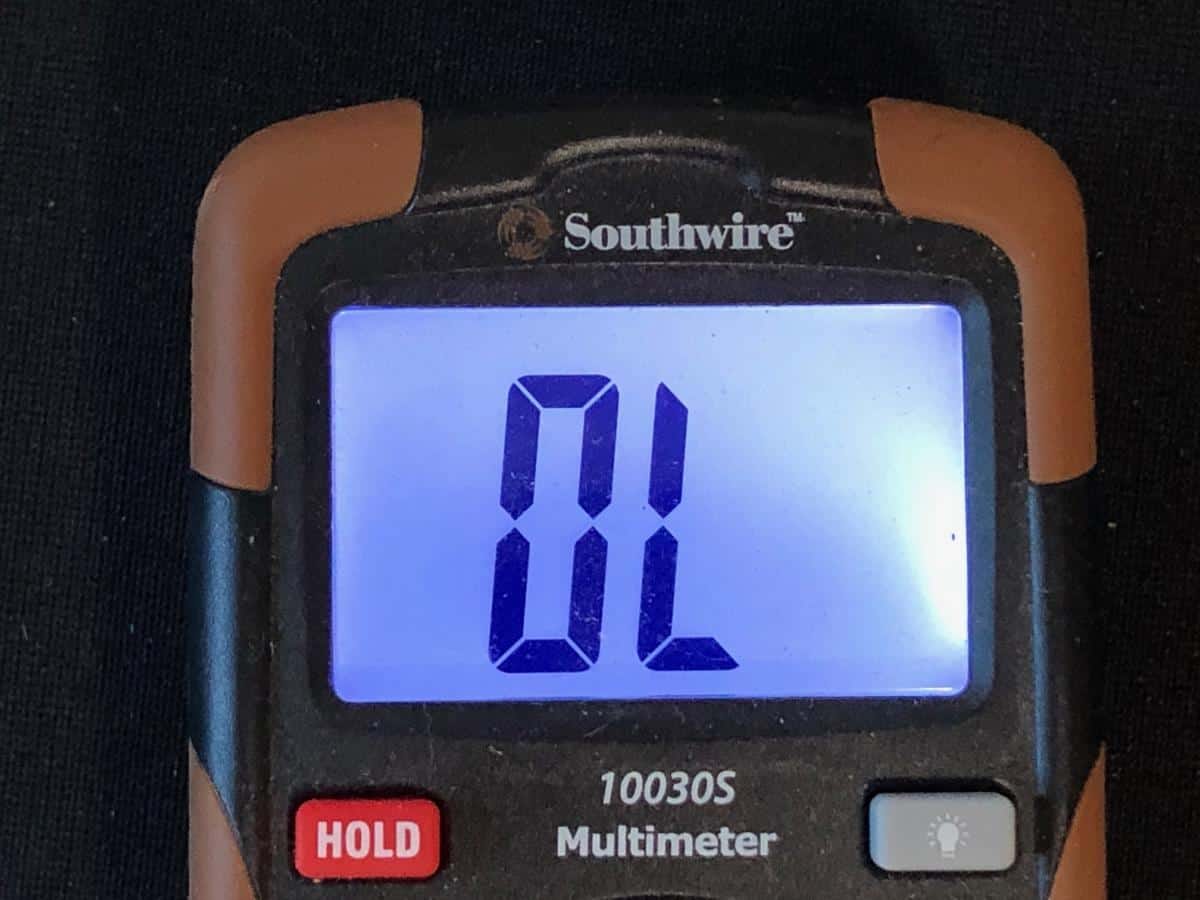

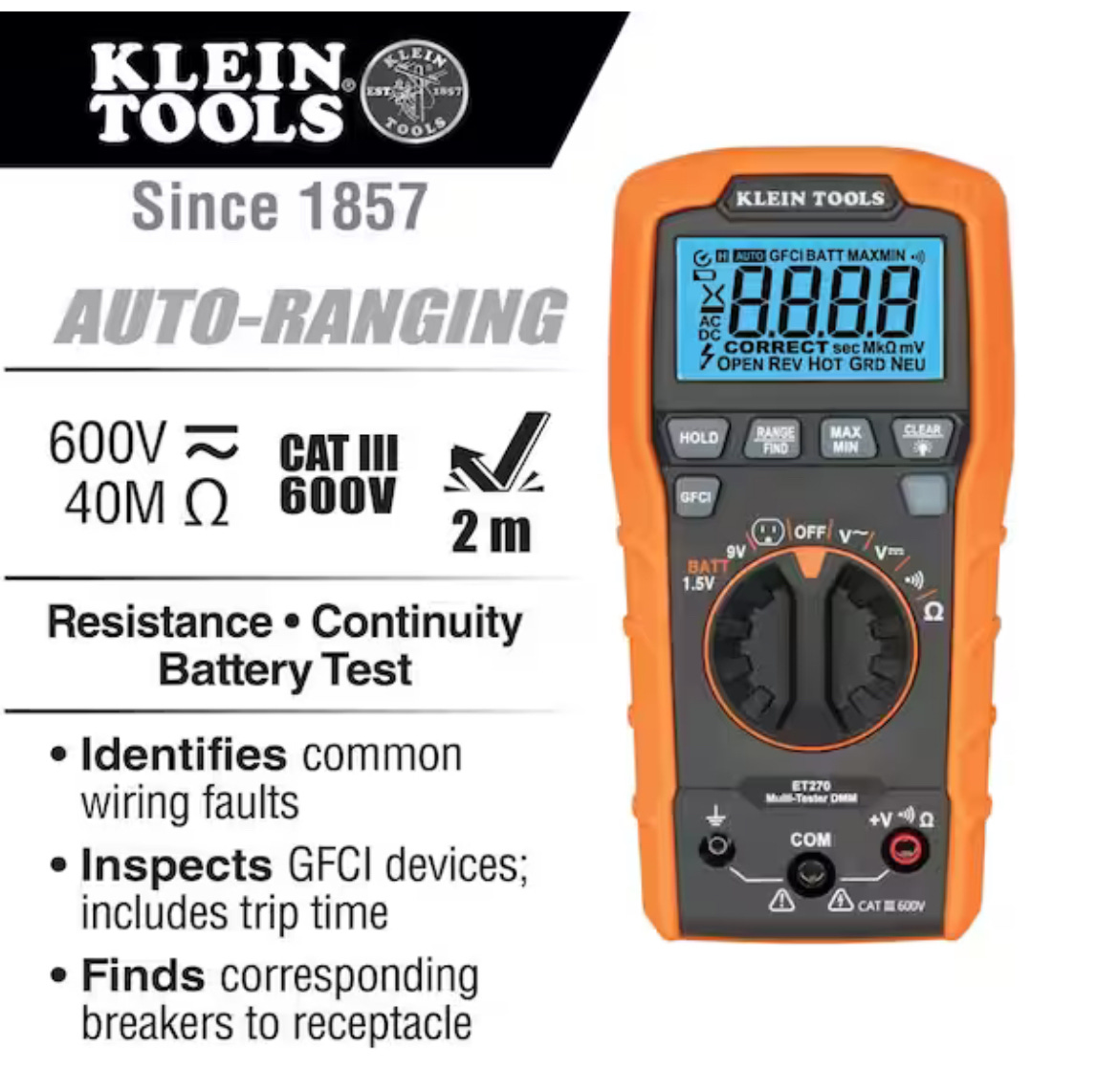

Have you ever encountered a situation where the probes on the multimeter won't reach the electrodes inside the 50 amp receptacle?
You used the term "nominal" which got me to thinking that might be a topic for a future article. A little on what causes over and under voltage; what is a comfortable deviation and when does it become" Oh No, He'll NO!